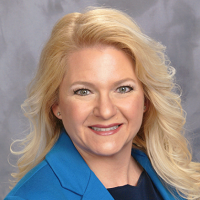Medicare Open Enrollment: Why You Need to Pay Extra Attention to Part D, From a Financial Adviser
The lowest premium for prescription drug coverage might not actually save you the most money. Make sure you take copays into consideration and do the math.


Medicare's open enrollment period has begun. Now through December 7, millions of Americans will be reviewing their current Medicare plans or enrolling in coverage for the very first time.
While there are several parts to Medicare and various plans to choose from, it's crucial to pay extra attention to your prescription drug coverage plan, or Part D, because failing to do so could come at a significant cost.
Each year, insurers adjust copays, premiums, formularies (the list of medications covered by your insurance), preferred pharmacies and in-network providers. They can also adjust the way medications are grouped and priced.
From just $107.88 $24.99 for Kiplinger Personal Finance
Become a smarter, better informed investor. Subscribe from just $107.88 $24.99, plus get up to 4 Special Issues

Sign up for Kiplinger’s Free Newsletters
Profit and prosper with the best of expert advice on investing, taxes, retirement, personal finance and more - straight to your e-mail.
Profit and prosper with the best of expert advice - straight to your e-mail.
Kiplinger's Adviser Intel, formerly known as Building Wealth, is a curated network of trusted financial professionals who share expert insights on wealth building and preservation. Contributors, including fiduciary financial planners, wealth managers, CEOs and attorneys, provide actionable advice about retirement planning, estate planning, tax strategies and more. Experts are invited to contribute and do not pay to be included, so you can trust their advice is honest and valuable.
Drugs are grouped into tiers that each carry a different cost. For example:
- Tier 1 consists of generic drugs and has the lowest copay
- Tier 2 includes preferred brand-name drugs with a moderate copay
- Tier 3 is for nonpreferred brand-name drugs and typically come with a higher copay
- Tiers 4 and 5 are for specialty drugs and carry the highest cost
Depending on the insurer, they may choose to move one drug from Tier 1 to Tier 2, or drop coverage on the medication entirely, which could significantly change how much you pay. If you're unaware of the change, you will miss out on finding a better plan and could end up spending more than you can afford.
This is the first step
With so much to consider, it can be difficult to know how to review your plan. The first step is to head to Medicare.gov's Plan Finder, where you can review plans for 2026. Make a list of your medications and look for plans that cover them.
You'll also want to make sure your provider and pharmacy are still in-network to minimize out-of-pocket costs.
It's also important to look beyond the plan's premiums. A plan that looks less expensive at first may actually cost you a lot more over the course of the year once you factor in copays/coinsurance, deductibles and medication tiers.
A Part D plan may have a low monthly premium, but if you take brand-name or specialty drugs, the copays/coinsurance could be much higher.
For example, let's say you're comparing two plans: Plan A and Plan B. Plan A has a monthly premium of $10, with a $40 copay for your main medication. With this plan, your annual premium is $120.
Assuming you're paying $40 each month for your medication, you're out-of-pocket costs for the year total $480. This brings your total annual cost to $600.
Plan B, on the other hand, has a monthly premium of $35 and a $5 copay for your medication. With this plan, the annual premium is $420, and the out-of-pocket cost for your medication is $60. This brings your total annual cost to $480, comparatively.
Changes to Medicare in 2026
At the federal level, there are some changes ahead for Medicare in 2026. For example, out-of-pocket expenses for drugs covered under Part D are capped at $2,100 per year.
Once the threshold is reached, beneficiaries will not pay any copayments or coinsurance for the remainder of the calendar year.
Looking for expert tips to grow and preserve your wealth? Sign up for Adviser Intel (formerly known as Building Wealth), our free, twice-weekly newsletter.
All Medicare Part D plans must also cap monthly insulin copayments at $35.
Enhancements will also be made to the Medicare Prescription Payment Plan. The plan, which allows beneficiaries to spread their drug costs evenly throughout the year, will also offer automatic renewals to simplify the process.
Due to inflation, the maximum deductible for Part D plans will increase from $590 in 2025 to $615 in 2026.
Medicare's open enrollment period is more than just an opportunity to enroll in coverage. For new and existing beneficiaries, it's an opportunity to review coverage options and make any necessary changes, specifically when it comes to Part D.
If you're taking medications, shop for different Part D plans and don't forget to look beyond the plan's premium.
If you're concerned about enrolling in coverage, visit the State Health Insurance Assistance Program, or talk with your financial adviser.
Related Content
- What to Do About These Three Medicare Changes During Open Enrollment
- Medicare Open Enrollment 2026 Live Updates
- What You Must Know About the Different Parts of Medicare
- Medicare Open Enrollment: 10 Things to Know
- The Medicare Surcharge: Test Your IRMAA Knowledge
Profit and prosper with the best of Kiplinger's advice on investing, taxes, retirement, personal finance and much more. Delivered daily. Enter your email in the box and click Sign Me Up.

Cynthia Pruemm, Founder and CEO of SIS Financial Group, specializes in financial planning, asset protection and transitional planning. Prior to starting SIS Financial Group, Cynthia served as State Director for two of America’s largest senior market agencies, where she also served as a member of the Chairmen’s Council and met her husband, Hagen. Because of their shared desire to help people during the next chapter in their lives, they founded SIS Financial Group.
-
 The Stoic Retirement: Ancient Wisdom for Today's Reality
The Stoic Retirement: Ancient Wisdom for Today's RealityA "Stoic retirement" doesn't mean depriving yourself. It's a character-based approach to life and aging that can bring calm and clarity.
-
 My Teen Crashed His Car and Now Our Insurance Has Tripled. What Now?
My Teen Crashed His Car and Now Our Insurance Has Tripled. What Now?Dealing with the costly aftermath of a teen car accident is stressful. Here are your options for navigating it.
-
 11 Outrageous Ways To Spend Money in Retirement
11 Outrageous Ways To Spend Money in RetirementWhether you have excess cash to spend or want to pretend, here’s a look at 11 ridiculous ways retirees can splurge.
-
 The Stoic Retirement: Ancient Wisdom for Today’s Biggest Life Transition
The Stoic Retirement: Ancient Wisdom for Today’s Biggest Life TransitionA "Stoic retirement" doesn't mean depriving yourself. It's a character-based approach to life and aging that can bring calm and clarity.
-
 11 Outrageous Ways To Spend Money in Retirement
11 Outrageous Ways To Spend Money in RetirementWhether you have excess cash to spend or want to pretend, here’s a look at 11 ridiculous ways retirees can splurge.
-
 I'm a Financial Planner for Millionaires: Here's How to Give Your Kids Cash Gifts Without Triggering IRS Paperwork
I'm a Financial Planner for Millionaires: Here's How to Give Your Kids Cash Gifts Without Triggering IRS PaperworkMost people can gift large sums without paying tax or filing a return, especially by structuring gifts across two tax years or splitting gifts with a spouse.
-
 'Boomer Candy' Investments Might Seem Sweet, But They Can Have a Sour Aftertaste
'Boomer Candy' Investments Might Seem Sweet, But They Can Have a Sour AftertasteProducts such as index annuities, structured notes and buffered ETFs might seem appealing, but sometimes they can rob you of flexibility and trap your capital.
-
 AI Stocks Lead Nasdaq's 398-Point Nosedive: Stock Market Today
AI Stocks Lead Nasdaq's 398-Point Nosedive: Stock Market TodayThe major stock market indexes do not yet reflect the bullish tendencies of sector rotation and broadening participation.
-
 Got $100 to Gamble? These Penny Stocks Could Be Worth the Ride
Got $100 to Gamble? These Penny Stocks Could Be Worth the RideVolatile penny stocks are high-risk plays with potentially high rewards. If you have $100 you can afford to lose, these three names are worth a look.
-
 Being the Executor of an Estate is a Thankless Job: Here's How to Do It Well Anyway
Being the Executor of an Estate is a Thankless Job: Here's How to Do It Well AnywayYou can be a "good" executor of an estate, even though carrying out someone's final wishes can be challenging.
-
 Quick Question: Are You Planning for a 20-Year Retirement or a 30-Year Retirement?
Quick Question: Are You Planning for a 20-Year Retirement or a 30-Year Retirement?You probably should be planning for a much longer retirement than you are. To avoid running out of retirement savings, you really need to make a plan.